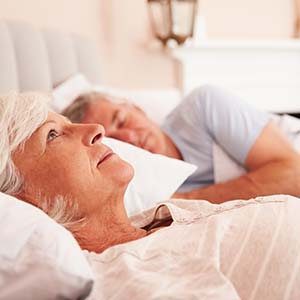In a few hours, you will be delivering a presentation to a client, with your boss and company’s senior leadership team in attendance. As the meeting approaches, your heart starts beating faster, your stomach hurts, and your palms are sweating. It's very likely you're experiencing anxiety.
To be clear, anxiety is a normal part of life. Everybody experiences moments that make them nervous and anxious.
But when those feelings and symptoms of anxiety don’t go away, or if they become overwhelming and interfere with your everyday life, you may be one of the 40 million American adults (18% of the population) with an anxiety disorder.
The different types of anxiety disorders
Generalized anxiety disorder, social anxiety disorder, phobias, and panic attacks all create a combination of emotional and physical symptoms.
The two most common types of anxiety disorders are generalized anxiety disorder and social anxiety disorder. They both make you feel persistent and excessive fear or worry in situations that are not threatening (i.e., your body snaps into fight-or-flight mode even when situations aren’t threatening your survival).
Generalized anxiety disorder symptoms may include:
- Restlessness, feeling wound-up or on edge
- Fatiguing easily
- Difficulty concentrating or having your mind go blank
- Irritability
- Muscle tension
- Difficulty controlling worry
- Sleep problems
People with social anxiety disorder (sometimes called “social phobia”) have a fear of social situations.
Symptoms may include:
- Feeling extremely anxious about being with other people and having a hard time talking to them
- Feeling very self-conscious in front of other people and worried about feeling humiliated, judged, embarrassed, or rejected, or fearful of offending others
- Worrying for days or weeks before a group event
- Avoiding places where there are other people
- Having a hard time making and keeping friends
- Blushing, sweating, or trembling around other people
- Feeling nauseous or sick to your stomach when other people are present
Other types of anxiety disorders
A panic disorder, which is characterized by panic attacks, produces feelings of terror that arise seemingly out of nowhere. Sometimes they are mistaken for a heart attack because they bring on strong physical symptoms like chest pain, heart palpitations, shortness of breath, and dizziness.
Phobias are also a form of anxiety. They include the fear of heights, spiders, and small places (claustrophobia). Sometimes a phobia can be so severe that the attempt to control it can be overwhelming.
If you find you are experiencing repeated, negative thoughts or images which feel out of your control, you may have obsessive-compulsive disorder (OCD). Find more information on OCD from the National Institute of Mental Health (NIMH).
Treating and coping with anxiety disorders
Most people develop symptoms of anxiety disorders before age 21. Women are 60% more likely than men to be diagnosed with an anxiety disorder.
If you suspect you might have an anxiety disorder, the first step is to visit your primary care doctor to rule out any possible physical health conditions such as an overactive thyroid or low blood sugar.
In addition, certain medications can sometimes produce symptoms of an anxiety disorder. Therefore, an adjustment in dosage or changing medications can relieve anxiety symptoms.
Since these types of anxiety disorders often coexist with related conditions like depression, your doctor may recommend a thorough emotional health evaluation. Furthermore, your doctor or mental health practitioner may recommend one or more treatment options, including psychotherapy, cognitive-behavioral therapy (CBT), or medication.
Many people learn how to successfully manage their anxiety symptoms, with one or more techniques that help both body and mind. These techniques can include meditation, exercise, stress management classes, yoga, tai chi, and relaxation techniques like stretching and breathing exercises.




